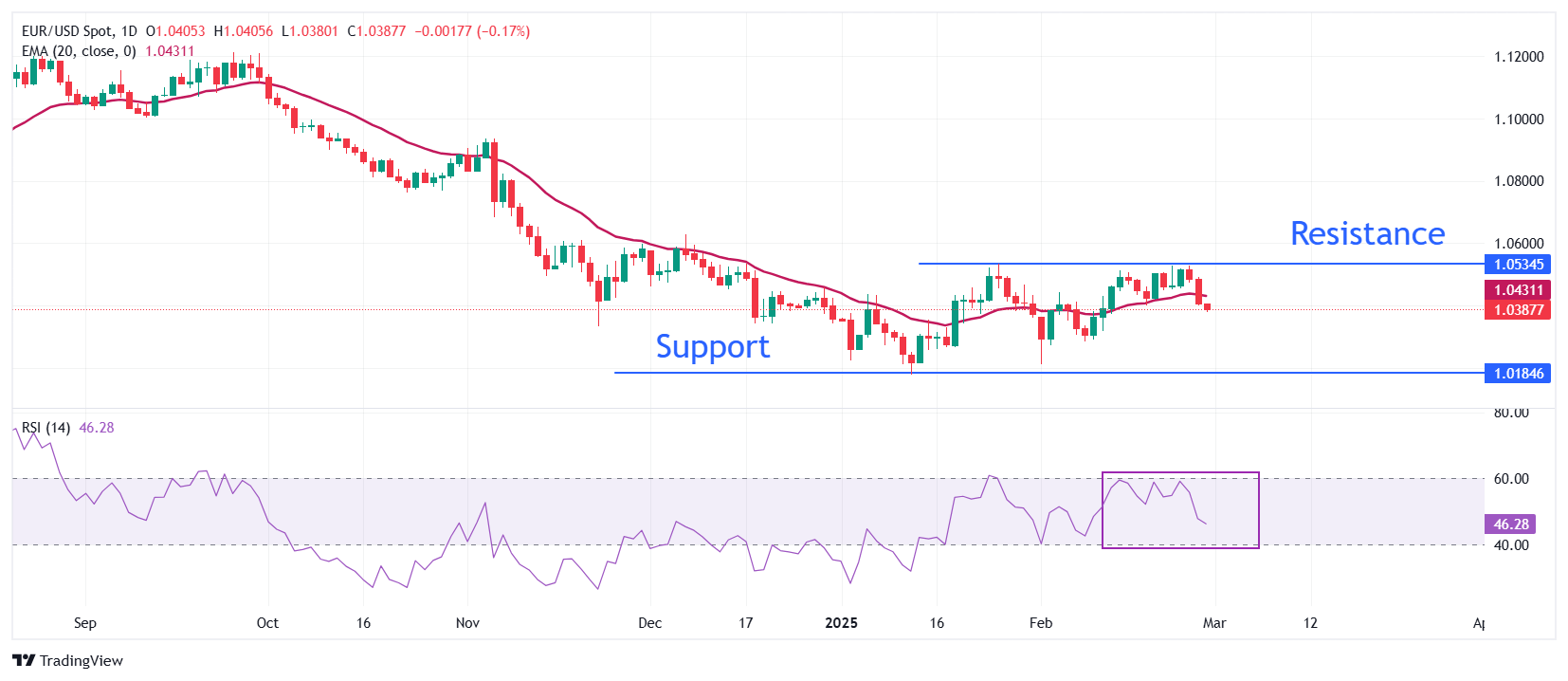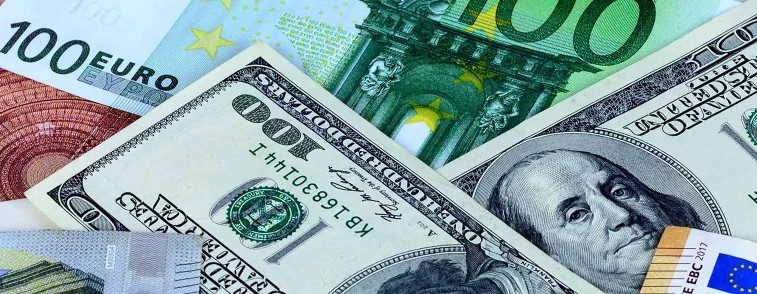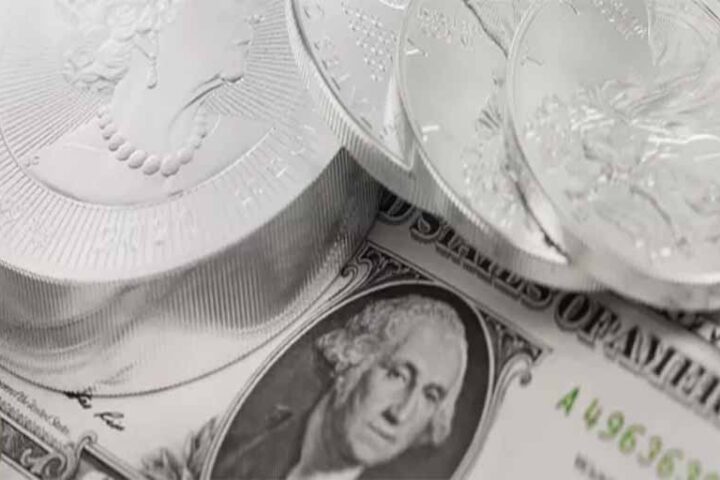EURUSD trades cautiously after sliding to near the key support of 1.0400 in European trading on Friday. The major currency pair faces selling pressure as fresh tariff threats from US President Donald Trump have increased the appeal of safe-haven assets, such as the US Dollar.
The DXY Dollar Index, which tracks the greenback’s value against six major currencies, extends its Thursday’s strong upward move to near 107.40.
On Thursday, President Trump communicated from his account on Truth Social that 25% tariffs on Canada and Mexico are “coming into effect on March 4” as “drugs are still pouring” into the economy from the borders of his North American allies.
Trump also threatened to impose an “additional 10% levy on China” on the same date as a large percentage of drugs entering the US is in the form of fentanyl, which is made in and supplied by China. Additionally, Donald Trump said he is poised to introduce reciprocal tariffs on April 2.
On Wednesday, Trump threatened to impose tariffs on the Eurozone. He said the tariffs will be announced “very soon,” and it will be 25% on “cars and other things”.
Market experts believe that Trump’s tariff agenda will be pro-growth and inflationary for the US economy. Such a scenario would compel Federal Reserve officials to maintain a restrictive monetary policy stance.
On Thursday, Philadelphia Fed Bank President Patrick Harker supported maintaining interest rates in the current range of 4.25%-4.50%. Harker said that he believes the current level is optimal for bringing inflation back to the 2% target without harming the labor market and economic growth.
To know the current status of inflation, investors await Friday’s US Personal Consumption Expenditures Price Index (PCE) data for January. Economists expect the core PCE inflation, which is the Fed’s preferred inflation gauge, to have decelerated to 2.6% from 2.8% in December.
EURUSD remains under pressure ahead of the preliminary inflation data of Germany and its six states for February, which will be published on Friday. The inflation data will influence market expectations for the European Central Bank’s monetary policy outlook.
According to market expectations, inflationary pressures slowed in February. This scenario would strengthen speculation that the ECB will cut interest rates again in the next policy meeting on Thursday.
According to a February 19-27 Reuters poll, the ECB is certain to cut its Deposit Facility rate by 25 basis points (bps) to 2.5%. This would be the fifth interest rate cut by the central bank in a row. Dovish votes on the poll were based on fears that President Donald Trump’s tariff agenda will damage the Eurozone economic growth.
The German economy is expected to be the major victim of a trade war between the Eurozone and the US, being the fourth largest trading partner of the country.
Meanwhile, German Retail Sales for January have come in higher than expected. The retail sales data, a key measure of consumer spending, rose by 0.2% in the month while it was expected to remain flat.
In December, the consumer spending measure contracted by 1.6%. On a yearly basis, Retail Sales rose at a faster pace of 2.9% compared to the 1.8% growth seen in December.

EURUSD chart by TradingView
(Source: OANDA)







